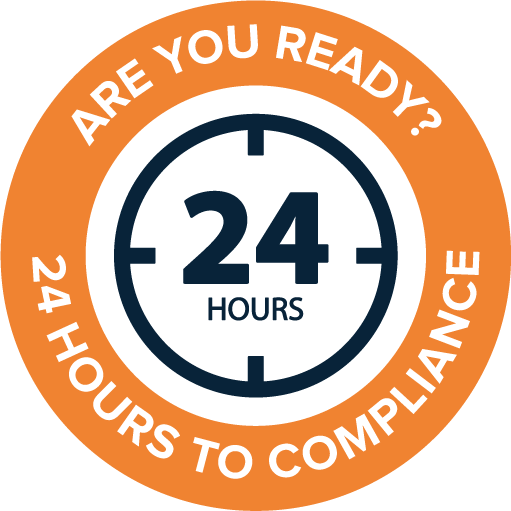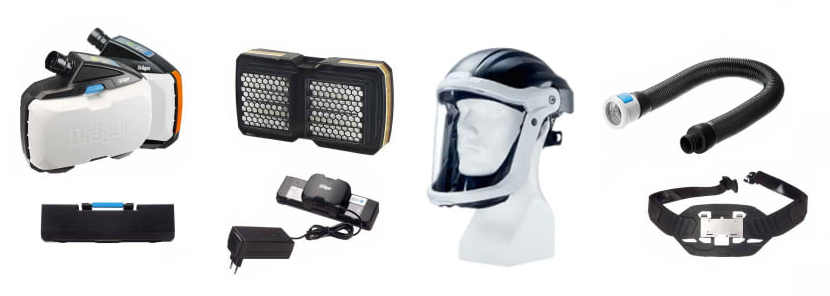HSE has recently launched a major campaign to spot-check construction businesses on their control of dust and respiratory protection of their employees. But a closer look at the issues behind occupational respiratory disease reveals that construction isn’t the only industry sector which should be worried about its site hazards, and dust is not the only problem.
| Site hazards | Resulting Respiratory Diseases
|
- Dust from cutting, drilling or sanding concrete, wood, brick, stone & cement Gases and fine particles from welding and hot cutting
- Fumes, dust and nickel compounds in foundries and manufacturing processes
- Biomass particles (dust and microorganisms) from working with grain or animal feed in agriculture or food production
- Chemicals from spray painting
- Gases in extreme working environments such as air conditioning, water supply, sewage
| Long Latency:
- Pneumoconiosis
- Mesothelioma
- COPD
- Silicosis
- Asbestosis
- Pleural Plaques
Short Latency:
- Allergic Alveolitis
- Work Related Asthma
|
Famously,
Asbestosis is responsible for a huge number of deaths resulting from workplace exposure to asbestos fibres. However, health and safety awareness in construction has grown, severe protective regulations have been put in place and the numbers developing it are very slowly
dropping after 50 years of rising cases. Of the 12,000 deaths per year from workplace related respiratory illnesses,
asbestosis still accounts for 40%. Some types of lung disease have reduced due to the changing landscape of industry in the UK –
Pneumoconiosis was widespread amongst coal miners, but gradually accounts for fewer fatalities. But other long-term respiratory diseases, caused not only by these airborne dust particles but also by various chemicals and gases inhaled in the workplace, are on the rise.
Silicosis: an example of lung disease and its development.
Silicosis is a respiratory disease which threatens those working in spray painting, among others. The respiratory hazard is silica particles, which become trapped in lung tissue causing inflammation and scarring. The particles also reduce the lungs' ability to take in oxygen. Silicosis results in permanent lung damage and is a progressive, debilitating, and sometimes fatal disease. Some patients may require a lung transplant. Sufferers are also at an increased risk of developing other serious diseases. There is no cure.
Occupational lung disease is irreversible and life limiting in many ways and has been likened by some to a “slow suffocation”. Added to the mortality figures above, the HSE statistics for those currently suffering, are staggering.
Living with breathing or lung problems caused or made worse by respiratory hazards at work are:
- 35, 000 people who worked in the last year
- 130,000 people who have ever worked
- a further estimated 13,000 new cases each year
The gradual drop-off in deaths from Asbestosis shows that
awareness campaigns and legislation can be effective, (the use of asbestos was banned completely from 1999) and there are very valid reasons for the current “Dust Kills” HSE inspection initiative. But although the Construction industry is being targeted as one of the worst offenders, there are a myriad of other industries, covered by the list above, where the risks from respiratory hazards such as dust, chemicals and gases are enormous; it surely only a matter of time until HSE spot checks are extended outside the current construction remit.
Related post: The HSE ‘Dust Kills’ Campaign – Are You Ready?

With potentially just a 24-hour window to ensure compliance, it can be difficult for an employer to navigate the complex category of respiratory protective equipment (RPE).
Anchor Safety has been specialising in PPE for high hazard environments for over 35 years and works nationwide with numerous corporate, multi-site, multi hazard clients. To make it faster and simpler to become fully compliant with respiratory regulation, we have technical experts on call who can discuss your occupational hygiene, check your site requirements, and show you our ‘grab and go’ ready packs. A range of these are available, from easy clean painters’ kits, packages for light industry or more rugged options. Alternatively, our experts can help you build your own kit or you can use our website to do this.

View the Drager Powered Respiratory Kits
In the longer term it is not enough just to equip your staff and assume you are home and dry – it is vital to support your employees to become compliant by using and looking after their equipment safely. Anchor Safety technical specialists can create a framework to educate your staff in equipment use, as well as promoting best practice and working with your maintenance resources to ensure that you have a completely effective RPE programme.
Call us today on 0800 328 5028 for advice.